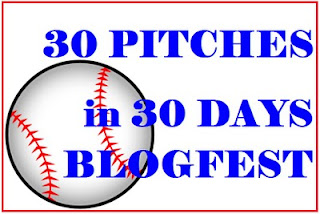But my 16 year old stepdaughter decided to stay with us for the school year, so suddenly I've been getting a lot more contemporary teen culture than I ever bargained for! (Her friends are always coming over, not to mention all the stuff she shows me on Facebook and YouTube). So maybe I'll venture into contemporary YA for my next book, which is Science Fiction. SF doesn't have to futurisitc; you can have it in a contemporary setting, like I Am Number Four, by Pittacus Lore.
Here's some fun things from my stepdaughter that *might* show up in a possible contemporary YA story.
Newish teen vocabluary. I've noticed her saying "burn" a lot with a nice sarcastic flair. As in, "That girl is trying so hard to win her ex back. Burn!"
New superstitions. Whenever she drives through a yellow light, she smacks the sun visor. It's a good luck thing, she tells me. (let me state a caveat, by "new" I may be refering to "new to me.")
Wal-Mart Games. Okay, we live in a small town, and the only place open ALL NIGHT is Wal-Mart (though she does have an 11pm weekend curfew, ahem). Anyway, Walmart is popular hangout for teens - with the traditional cart-racing still high on the popularity list, but there's all sorts of other games, many to do with rearranging merchanise (oh dear). (just re-arranging. No stealing, she assures me).
Star tripping. (forget the cow tipping and the snipe hunts) (you can google it- fortunately, unlike some kinds of "tripping", this one's legal.
Arm workout. For a fashion-concious teenager, they get a great cardiovascular workout by flipping through clothes racks at lightning speed with one arm while quickly accumulating piles of clothes to try on in the other arm.
Teen formal wear. My daughter is going to the Homecoming Dance, so she and her friends pooled all their formal wear resources (owned and borrowed) and had a dress party for everyone to pick out their options. Startled by the current teen trends in formal dresses, I decided to look up a couple big stores online to see if these were, indeed, current fashion options.
Amazed by the - um - babydollish sort of trend of these clothes (and the tie dye/spilled paint effect!), I forwarded this picture to a friend my age to get her opinon.
I loved her response: "Oh my word. Um… Speechless. It looks like little girl dress up stuff minus the wings."
Just for fun, I had to post a picture of what my prom dress looked like (though mine was peach colored). Can you guess the decade?
Now, for the girl who wasn't so hung up on modesty, my decade also had teen formal dresses that looked like this:
It was so much fun looking up dresses online, I am half tempted to have a "Teen Prom Dresses over the Decades" blogfest!
So tell me your favorite teen tidbit, contemporary or otherwise.
And check out Sophia Richardson's 30 loglines in 30 days blogfest (I'm in!) (you don't have to post 30 loglines, it's not hard at all)












